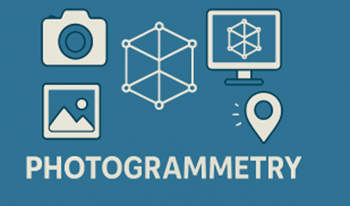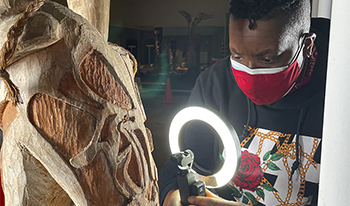
Photogrammetry has greatly improved the recording, preservation, and accessibility of cultural heritage in archaeology and scientific research. The increased use of 3D modeling in heritage projects brings about significant challenges, especially in terms of data management. In this context, the challenges involve ensuring that digital models are reliable, traceable, and usable. Often, these concerns are disregarded until they impede access or reuse, affecting the long-term preservation and accessibility of cultural heritage data.

In 2021, the Michael C. Rockefeller Wing (MCRW) in the Metropolitan Museum of Art, which focuses on the regions of Asia, Africa, and the Oceana, began the process of deinstalling its collection to start renovations on their galleries. The Imaging Department coordinated closely with the curatorial, collections and conservation teams to develop a comprehensive 2 and 3D imaging campaign. This paper centers around the unique challenges our team faced when asked to record, completely and accurately, four monumental New Guinea Ancestor (Bisj) Poles, carved out of the wood of mangrove trees by the Asmat people, on an extremely tight timeline. The decision to employ 3D digitization is always a difficult one because technology is constantly evolving and there are few standards for image quality metrics. This paper documents our team's approach to solving technical challenges.

Estimating the pose from fiducial markers is a widely researched topic with practical importance for computer vision, robotics and photogrammetry. In this paper, we aim at quantifying the accuracy of pose estimation in real-world scenarios. More specifically, we investigate six different factors, which impact the accuracy of pose estimation, namely: number of points, depth offset, planar offset, manufacturing error, detection error, and constellation size. Their influence is quantified for four non-iterative pose estimation algorithms, employing direct linear transform, direct least squares, robust perspective n-point, and infinitesimal planar pose estimation, respectively. We present empirical results which are instructive for selecting a well-performing pose estimation method and rectifying the factors causing errors and degrading the rotational and translational accuracy of pose estimation.

Photogrammetric three-dimensional (3D) reconstruction is an image processing technique used to develop digital 3D models from a series of two-dimensional images. This technique is commonly applied to optical photography though it can also be applied to microscopic imaging techniques such as scanning electron microscopy (SEM). The authors propose a method for the application of photogrammetry techniques to SEM micrographs in order to develop 3D models suitable for volumetric analysis. SEM operating parameters for image acquisition are explored and the relative effects discussed. This study considered a variety of microscopic samples, differing in size, geometry and composition, and found that optimal operating parameters vary with sample geometry. Evaluation of reconstructed 3D models suggests that the quality of the models strongly determines the accuracy of the volumetric measurements obtainable. In particular, they report on volumetric results achieved from a laser ablation pit and discuss considerations for data acquisition routines.